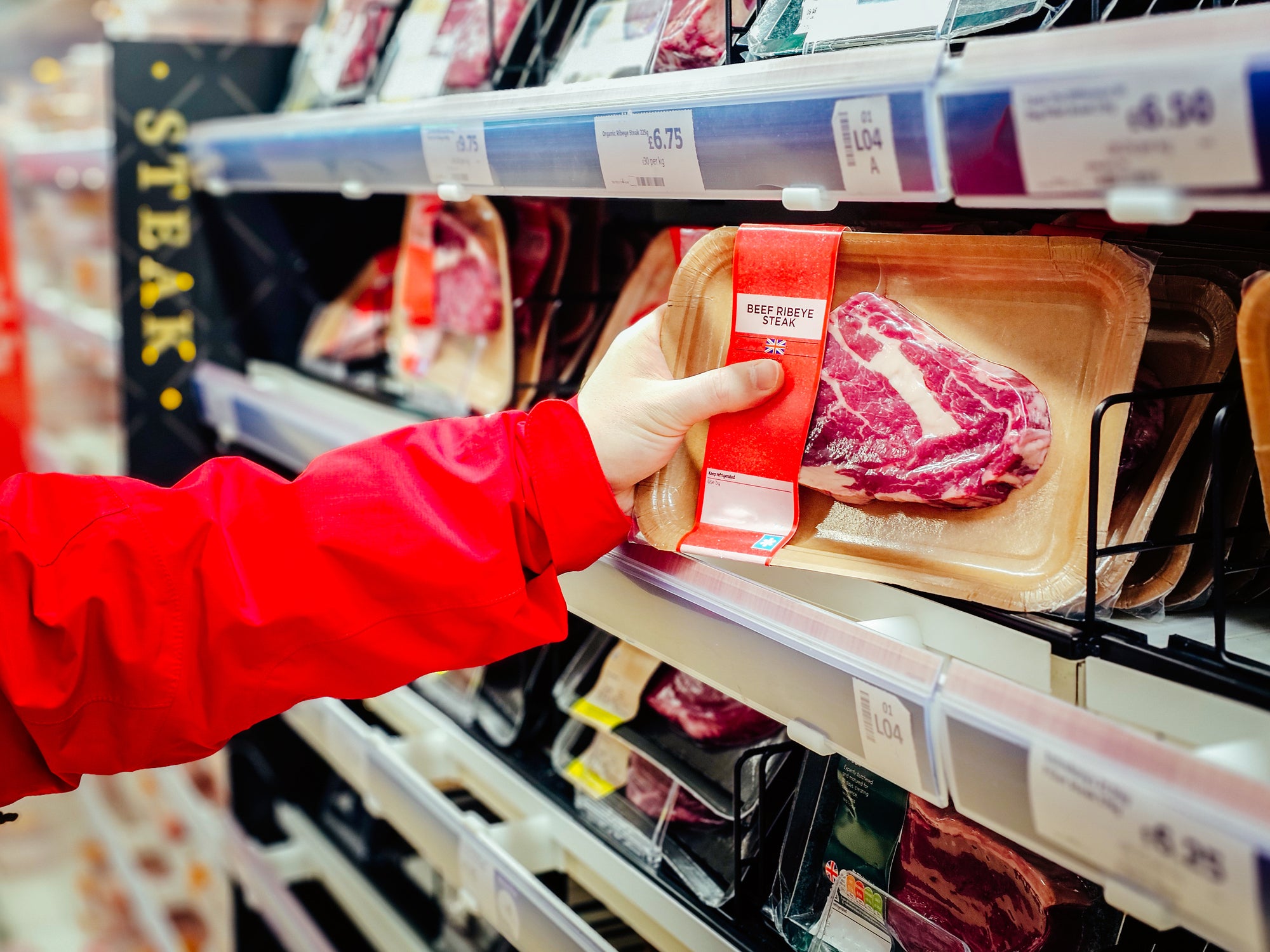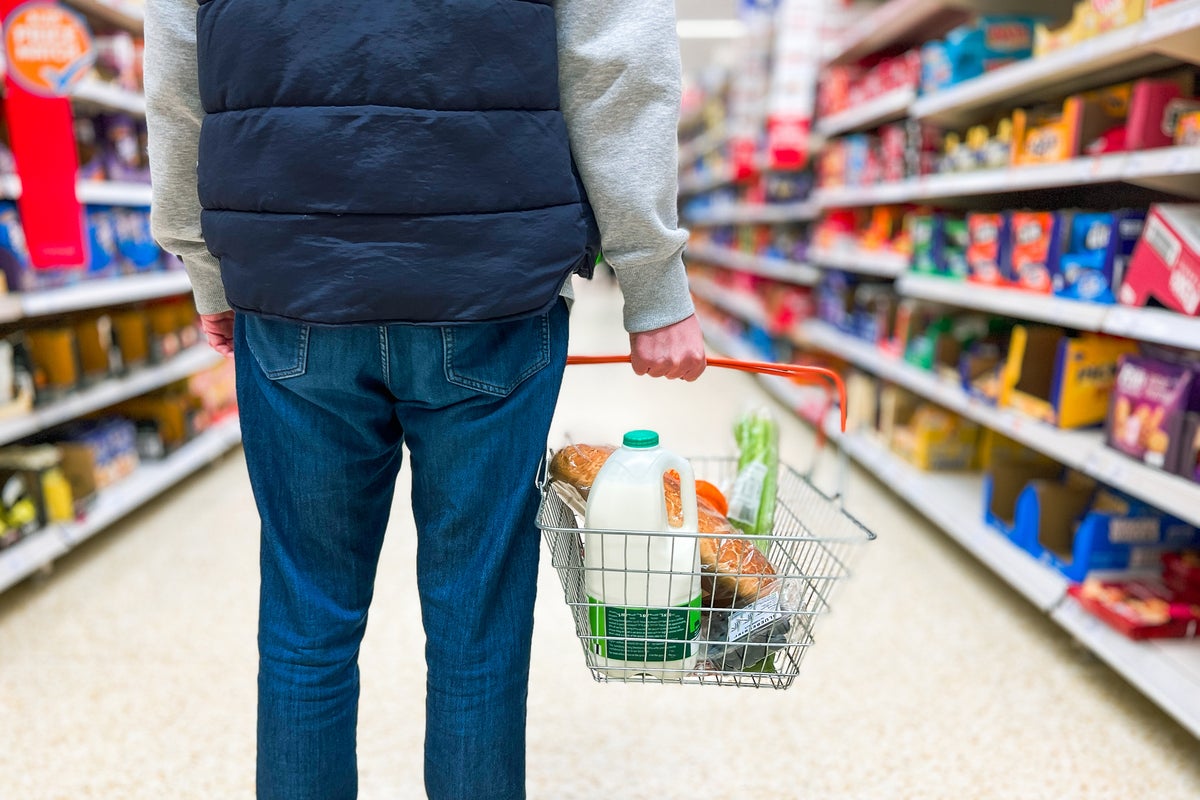A few years ago, £100 would fill a trolley. Now it barely fills a basket. Across social media, shoppers are posting photos of their groceries with captions somewhere between disbelief and despair. “£98! At Aldi, no booze included and only meat is sliced for a sandwich and a chicken to roast. Six months ago, this would have been £70!” read one viral post.
The so-called “£100 weekly shop” – once shorthand for a manageable middle-class routine – has become a symbol of how far our money no longer goes. What’s replaced it is far more chaotic: bulk-buys, frozen finds, endless top-ups and a growing sense that food shopping has turned from a domestic ritual into an act of survival.
For Kimberley Coke, a working mum of two in Hertfordshire, the notion of a single weekly shop now feels impossible. “Our routine has changed as we’re out so much with busy family commitments and kids’ football,” she says – she commutes to London while her husband works in the next town over. “The food shop is sporadic for four. We tend to do one massive, expensive shop a month, but then we’re constantly playing top-up.”
“I tend to shop at Sainsbury’s but do top-up shops at Aldi and Asda and get frozen stuff for the kids at the Food Warehouse,” she explains. “They do a good, healthy frozen protein range, which lasts for ages in the freezer.” Even Costco, once her way to stock up and save, can backfire: “It’s amazing for bulk shopping – high quality and super nice stuff. But, God, I end up spending a few hundred pounds in a flash!”
What Coke describes mirrors a wider national trend. According to the British Retail Consortium (BRC), families are returning to a hybrid routine of smaller weekly “big” shops followed by multiple top-ups.
According to the Office for National Statistics, the rate of food and non-alcoholic drink inflation rose to 5.1 per cent in August, up from 4.9 per cent in July – the fifth consecutive month of rising prices. Vegetables, milk, cheese, fish, beef and pork were among the biggest climbers, reflecting a mix of poor harvests and supply-chain disruption. Figures from Worldpanel by Numerator show supermarket prices remain 4.9 per cent higher than a year ago, despite months of so-called “price wars” between the major grocers.
“Many families are switching to supermarket own brands to save money where they can,” says Kris Hamer, the BRC’s director of insight. “And while customers moved back to large weekly shopping trips during the pandemic, many have returned to a smaller weekly ‘big’ shop followed by small ‘top-up’ trips through the week.”
That splintering of the “big shop” is echoed by Tom Zahir, a chef who lives in east London with his partner and their new baby. “We do one big shop every 10-14 days, which will be online from a supermarket – in that we have boring stuff like toilet roll, toothpaste, breakfast cereals, cheeses, milk and eggs,” he says. “We’ll buy basic meats from there too – chicken breasts, some mince, etc, for staple meals. That shop might run £70-90.”
The rest, he says, is made up of smaller, more spontaneous trips. “Local shop for items for specific meals – good value bunches of herbs, tomatoes, salads – or to a slightly larger independent shop nearby with a butcher counter.”
Every couple of months they bulk-buy meat for the freezer, but “in recent months (we just had a baby), we’ve found ourselves using delivery services like Gopuff and Zoom for last-minute purchases of protein in a pinch – this is usually down to poor planning without set meals in mind.”
5.1%
Food and non-alcoholic drink inflation as of August 2025
He estimates their spend at around £75 a week, “but it is super-noticeable how much less it sometimes feels you get for that, especially when buying things like dishwasher tablets or laundry items in a shop.”
Zahir’s household – like many urban families – now buys across several ecosystems. “The variety of places we get our household essentials from has increased massively,” he says. “We buy more in bulk now for savings – especially with household cleaning stuff – it can be from Amazon, Costco or even subscription services for things like cat litter and baby formula.”
“Retailers are grappling with an additional £5bn in costs from April’s increased employer national insurance contributions and national living wage,” says Hamer. “The result is that food inflation has been trending upwards over recent months, expected to hit around 6 per cent by the end of this year.”
The Food Foundation also points to what it calls “climateflation” – the ripple effect of extreme weather events and disrupted harvests driving up prices for core ingredients. The organisation warns that as long as food systems remain vulnerable to climate shocks, affordability will stay precarious.

open image in gallery
Meat is among the products rising fastest in price, with shoppers forced to rethink how – and where – they buy their weekly essentials (Getty)
Meanwhile, the market has tilted quietly towards value. Own-label products now account for 51.2 per cent of all supermarket sales, up from 50.9 per cent a year ago, as shoppers reach for cheaper alternatives.
The Treasury, for its part, has denied that government policy is to blame for supermarket price rises, pointing instead to global commodity pressures. But for shoppers, that distinction is irrelevant when the till flashes over £100.
In other words, supermarkets aren’t inflating prices for sport; they’re juggling an expensive equation of wages, regulation, climate shocks and supply chains. But for households, those incremental rises – 30p here, 50p there – accumulate into real lifestyle changes.
Zahir says the fallout is tangible. “Meats and dairy are up massively and there is no chance we will buy any cleaning stuff in the supermarket now as it’s all so expensive. Household medicines are also so expensive now – a box of Lemsip is £7?!”
There is no chance we will buy any cleaning stuff in the supermarket now as it’s all so expensive. Household medicines are also so expensive now – a box of Lemsip is £7?!
Tom Zahir, shopping for family of three
Even for those with comfortable incomes, small costs now dictate habits. “A lack of planning can seriously push the cost of your shop up,” he admits. “We’ve also trialled quite a few online supermarkets and will make sure we utilise things like £25-off vouchers much more than we used to.”
Rising prices have created a generation of hyper-strategic shoppers. For Coke, frozen food and Costco runs are now core tactics. For Zahir, it’s meal planning and what chefs call “cross-utilisation”: buying ingredients that can serve multiple dishes. “This week I bought a chicken and used the breast for a salad plate, the legs to chop up into a topping for tacos and then used the wings and carcass to make a stock which will turn into a soup,” he says. “I also tend to buy and freeze items more than ever before.”
Even ideas of indulgence have changed. “Buying a premium cut of meat at a supermarket – or going in at the fancy Waitrose cheese or deli counter – is definitely a huge rarity these days,” he says. “If we do this now, it will only be from an independent deli, cheesemonger or butcher where we know the quality is higher and it’s only marginally more than buying it from a supermarket.”
For many households, this kind of strategising isn’t optional. It’s survival. The Food Foundation’s Food Insecurity Tracker found that 7.3 million adults – nearly 14 per cent of UK households – experienced food insecurity in January 2025, rising to 17.9 per cent among families with children. The charity’s Basic Basket tracker shows that a nutritionally adequate weekly shop for one man and one woman now costs over £100.
The weekly shop once stood for something bigger than a receipt – a symbol of control, of being able to fill a fridge and plan a week. Its disappearance tells a story about the fragility of that stability. The ritual that once anchored everyday life has become a test of endurance, proof of how much responsibility for affordability has shifted from government and industry onto households themselves.

